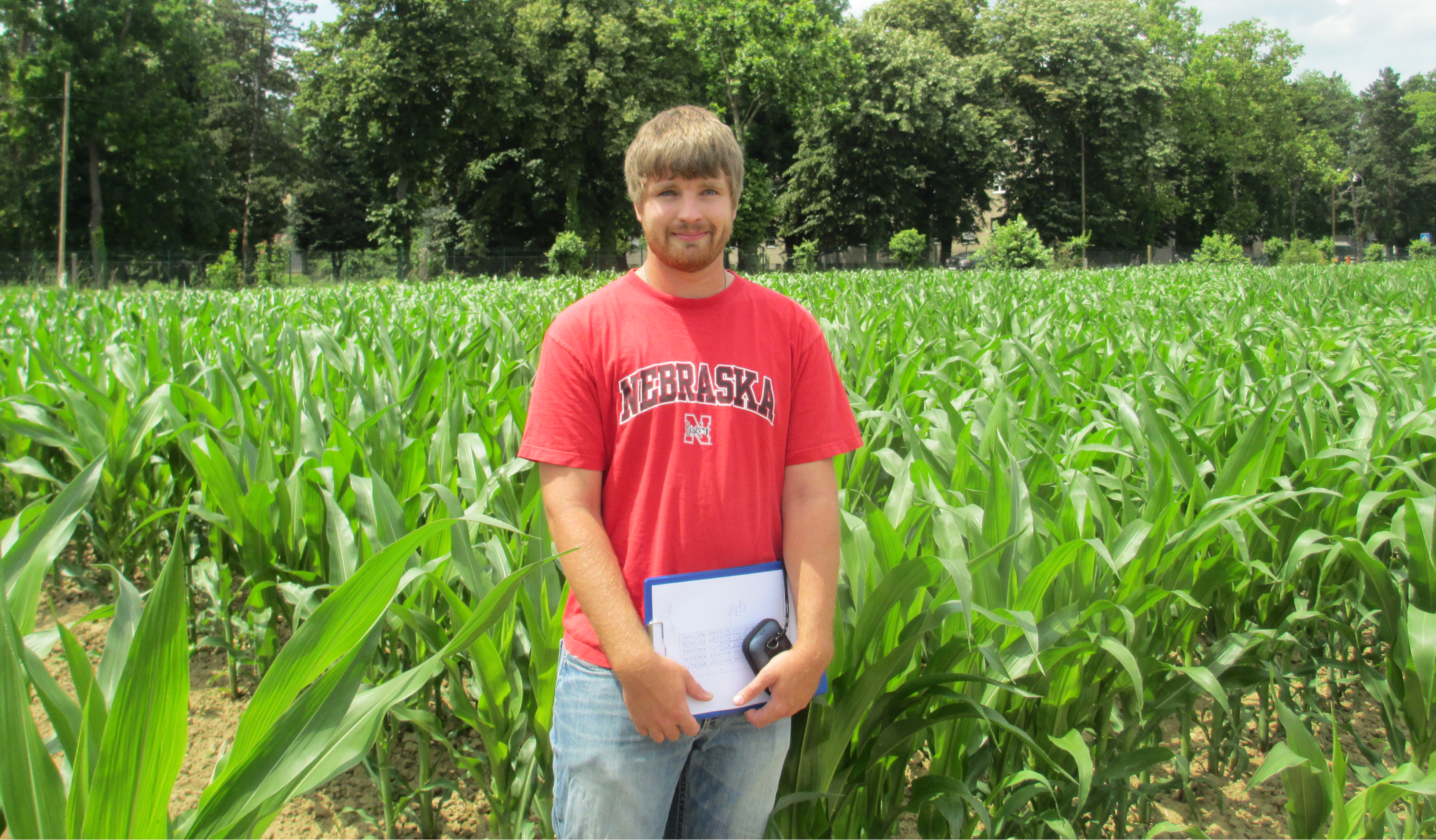
by Brianne Wolf | IANR Global Engagement
While the connection might not seem immediately obvious, Nebraska and Croatia have something very much in common: corn (or maize, as it is often referred to abroad). While its significance in the land-locked Cornhusker state is hard to miss, it is also a very important field crop in the latter; being produced on approximately 300,000 hectares of the small central European nation every year. This commodity commonality helped spark a research collaboration between a University of Nebraska-Lincoln faculty member and graduate students and several faculty at the Faculty of Agriculture of the University of Zagreb (FAZ), which, among many wide-reaching benefits, just marked the third journal article accepted for publication stemming from the collaborative relationship.
“Maize breeding has a long tradition in Croatia, but agronomic research to allow Croatian farmers to fully capture the increased yield potential of new maize hybrids has lagged. The collaborative research conducted by Nebraska graduate student Jeremy Milander, FAZ faculty member Zeljko Jukic, and Nebraska faculty member Stephen Mason has helped address this issue,” said Renata Bažok, professor at FAZ's Department of Agricultural Zoology and Vice-Dean for International Relations.
Additionally, Bažok noted, a partnership with a university with an international reputation for expertise in the agricultural sciences like Nebraska helps the Faculty of Agriculture at the University of Zagreb realize their potential to be a leader in Croatian agriculture and natural resource research and education.
Most notably, the past five years’ collaborative research on maize plant population and its effect on yield components across the two countries resulted in three peer-reviewed scientific articles published in the academic journals Crop Science, Cereal Research Communications, and Agriculturae Conspectus Scientificus.
During the course of this relationship, approximately 15 UNL and FAZ faculty have spent time in the other country; Nebraska’s Arlen Etling and Susan Fritz each spent several weeks (six and two, respectively) in Croatia with Fulbright Specialist Grants in 2010 and 2012; six FAZ students spent a summer internship at UNL and FAZ faculty member Zlatko Svecnjak just completed a Fulbright research grant stay at Nebraska over the course of 2017. Jukić continues as an ongoing adjunct assistant professor in the Department of Agronomy and Horticulture at UNL, having visited in 2015 to participate in Milander's Master of Science thesis defense, meet with IANR staff, and present a seminar.
Over the years of research collaboration, mutual learning, and exchanges, the benefits were numerous. Among them, Mason said, most significant were the professional development for all involved and three peer-reviewed scientific articles.
“The professional relationship I have developed with Dr. Jukić and the University of Zagreb has been a highlight of my last eight faculty years and contributed greatly to my professional efforts,” said Mason. Jukic added, “I am very happy that I had the opportunity to collaborate with Dr. Mason, and the research and graduate student advising helped build my career as a scientist and a teacher.” This collaboration showed that engaging graduate students and faculty in research with an international collaboration component has immediate and long-term benefits.
“Visiting Croatia and working with Croatian colleagues has broadened my horizons and has helped me realize there are different agricultural systems than what we are accustomed to. We may do some things differently, but at the end of the day, we all have the same end goals,” said Milander, now a research technician at the Northeast District Eastern Nebraska Research and Extension Center in Concord whose work continues to benefit Nebraska’s Department of Agronomy and Horticulture.
The positive impact of the collaborative research projects didn't stop there. Zaher Kmail, a Nebraska Ph.D. graduate student in the Department of Statistics, also contributed to statistical analysis of research results and publication, saying that it furthered his capacity as scientist and statistical consultant, in addition to expanding his international knowledge, particularly of Croatia.
Mason credits Roch Gaussoin and the Department of Agronomy and Horticulture for their contribution to the project through support of Milander's M.S. program, enhancing both teaching and research efforts as well as administrators at the Faculty of Agriculture at the University of Zagreb for supporting research in Croatia. By combining various funds from both Nebraskan and Croatian sources and the contributions of many, they were able to conceive and execute the program with important outputs.
"That this work was financially supported by both institutions, shows the significance of this collaboration to both...Faculty and student exchanges, and collaborative research on maize production has enhanced the research and teaching program at FAZ, and hopefully will continue into the future," said Bažok.
Articles cited:
Milander, J., Z. Jukic, S. Mason, T. Glausha, Z. Kmail. 2016. Plant Population Influence on Maize Yield Components in Croatia and Nebraska. Crop Science. 56:1-9.
Milander, J., Z. Jukic, S. Mason, T. Galusha, Z. Kmail. 2017. Hybrid Maturity Influence on Maize Yield and Yielf Component Response to Plant Population in Croatia and Nebraska. Cereal Research Communications. 45(2):326-335
Kmail, Z., J. Milander, Z. Jukic, S. Mason. 2016. Path Analysis Comparison of Plant Population and Hybrid Maturity for Maize Primary and Secondary Yield Components. Agriculturae Conspectus Scientificus. 81:197-204.
More details at: https://go.unl.edu/zgq0